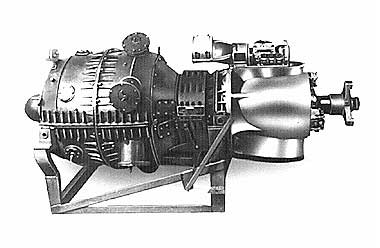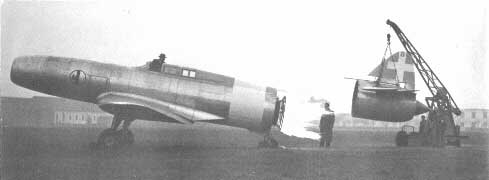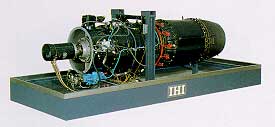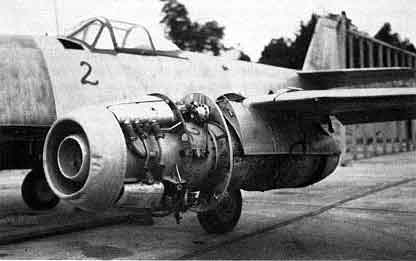Malesice
-
M-04
|
A copy of the German Junkers Jumo 004, assembled at the repair works in Malesice using new and spare parts. Used to power the Avia S 92 / CS 92.
|
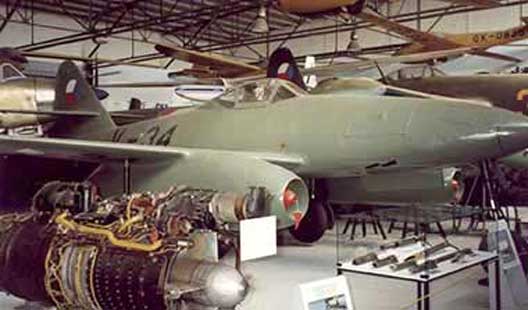 |
Lorin Ramjet
-
Invented in 1908 by French man René Lorin, it consisted
of just a tube, at one end air enters by the forward motion of the plane, it
is compressed by the inlet, then fuel is added and burnt, all the energy being
in the exhaust, which is expelled at the other end. Some what be for it's time,
as the ramjet does not start to work until around 200 mph, but it gets more
efficient the faster it goes! Experimented with by Germany, Russia and the USA.
Fitted under the wings of there piston engined fighters to increase speed ,
but was found impractical because of high fuel consumption and high drag. But
it was used very successfully by Doblhof on the worlds first jet powered helicopter
in 1944, the WNF V-4. which
had ramjets at the tips of it's blades. (see also USSR).
In France however René Leduc continued Lorin's work from 1937, seeing
his own Lorin powered aircraft the Leduc
010 flying under it's own power in 1947.

